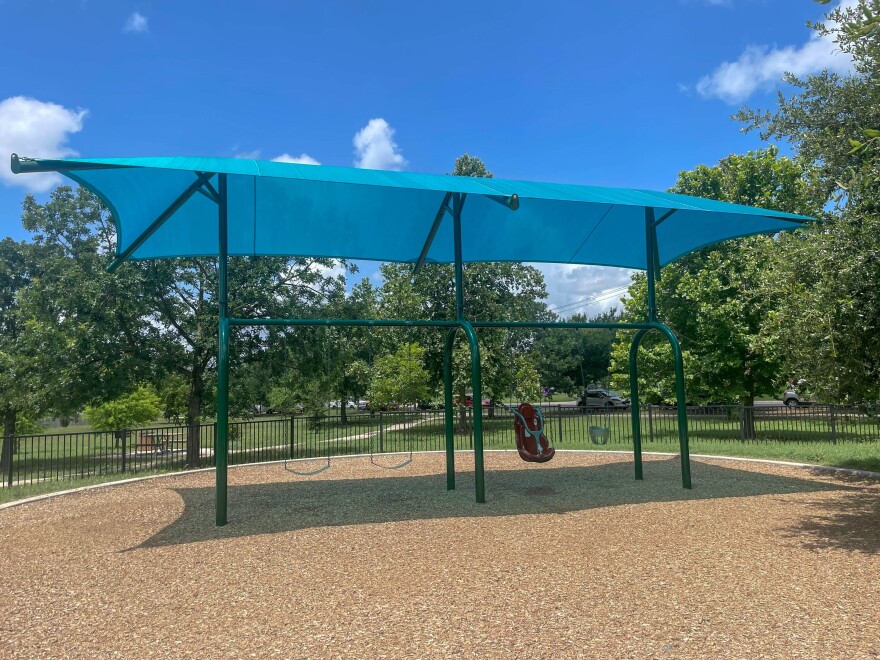In an effort to beat the heat, several shade structures are going up at public parks, playgrounds and pools around town.
Austin dedicated $4 million — $2 million of which was donated by the Austin Parks Foundation — to provide more shade in public places. City officials said it has become necessary as summer temperatures more frequently reach above normal, and falls and winters become more mild.
Temperatures tend to trend higher in East Austin, where much of Austin's low-income housing is located.
In 2020, Austin partnered with the National Oceanic and Atmospheric Administration and UT Austin to study and map the areas that are most exposed to extreme heat on the East side. A lack of shade and asphalt roads that retain heat create “heat islands,” or urban areas that experience higher temperatures than outlying areas, which usually have more green space.
Council Member Vanessa Fuentes, who represents a portion of the Eastern Crescent, said it is crucial to have a shade as the climate crisis worsens.
“We have hot days all year around,” Fuentes said. "So really the shade structures will come in handy throughout the year — not just during the blazing summer heat.”
But Lindsey Machamer, park development project management supervisor, said adding shade structures is a small part of a larger effort to create a heat-resilient community.
That includes enhancing access to swimming pools and splash pads and extending cooling center hours and spaces. The city is also working to implement its plan to address climate change and improve community sustainability and resiliency.
Austin-Travis County EMS officials said that heat-related illnesses have spiked since last year, increasing almost 90%. The issue is only expected to worsen as temperatures in Central Texas climb.
Through partnerships, the city has been able to fund some of its heat resiliency projects, but with a looming budget deficit city leaders will be forced to make tough decisions about where to spend money.
Fuentes said she and her colleagues are keeping these goals and needs in mind as they head into budget discussions next month.
“Given the most recent financial forecast and slower than anticipated sales revenue, it's going to be a budget crunch for us coming up,” Fuentes said. “It's going to be more and more challenging to fund basic services like parks and rec. That is why the partnership with APF (Austin Parks Foundation) is going to be crucial and key in getting as many shade projects off the ground.”
See where the shade structures are going up:







